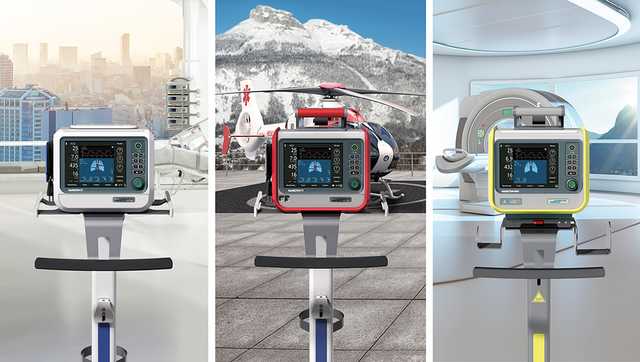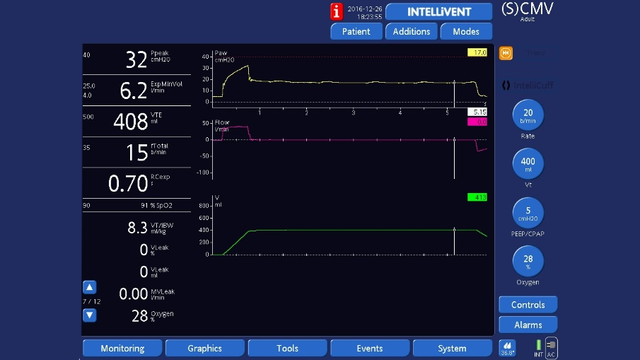
Autore: Simon Franz
Data: 14.07.2017

Anche se il principio di una pressione di plateau "sicura" è già stato messo in discussione, gli standard di cura ne prevedono ancora l'utilizzo per l'adeguamento della ventilazione con protezione polmonare nei pazienti con distress respiratorio acuto (ARDS) (
A causa del sistema pneumatico senza valvole, sui ventilatori HAMILTON-C1/T1/MR1 non è possibile misurare Pplateau eseguendo una manovra di pausa inspiratoria. Pplateau è comunque disponibile come parametro di monitoraggio e può essere visualizzata se il software del ventilatore utilizzato lo consente.
| HAMILTON-C1/T1/MR1, versione software < 2.2.0 | HAMILTON-C1/T1/MR1, versione software ≥ 2.2.0 |
|---|---|
| La pressione di fine inspirazione è sempre visualizzata come Pplateau. Occorre ricordare che se è presente un flusso a fine espirazione il valore di Pplateau visualizzato è superiore al valore effettivo di Pplateau. | Il valore di Pplateau viene visualizzato solo se il flusso a fine espirazione è prossimo allo zero. Il valore di Pplateau visualizzato può comunque essere maggiore del valore effettivo di Pplateau. |
Di sequito una potenziale strategia alternativa per calcolare Pplateau nelle situazioni in cui il flusso a fine inspirazione non è vicino allo zero o la pressione di fine inspirazione misurata non sembra accurata:
Questo calcolo dipende dall'accuratezza del valore misurato di Cstat, ovvero dall'assenza di sforzi significativi del paziente. Pinsp deve essere almeno ~10 cmH2O.
Pplateau = (VTE ml/Cstat ml/cmH2O) + PEEP cmH2O
Esempio
VTE: 450 ml; Cstat: 50 ml/cmH2O; PEEP: 8 cmH2O
(450 ml/50 ml/cmH2O) + 8 cmH2O = 17 cmH2O
Pplateau = 17 cmH2O
∆P = 9 cmH2O
Un ulteriore vantaggio è dato dal fatto che dal calcolo si ottiene anche ∆P. ∆P è fortemente associata alla sopravvivenza nei pazienti con ARDS e può quindi rivelarsi il parametro più interessante (
Dispositivi interessati: HAMILTON-C1/T1/MR1 (tutte le versioni software)

ARDS is characterized by lung collapse and consolidation leaving just a small portion of aerated lung remaining, which is at risk of ventilator-induced lung injuries (baby-lung concept).

Airway driving pressure is associated with clinical outcomes in ARDS, post-surgical, and normal-lung patients, and is a measure of the strain applied to the respiratory system and the risk of ventilator-induced lung injuries. Evidence suggests we should keep driving pressure below 14 cmH2O. But how can we measure it?